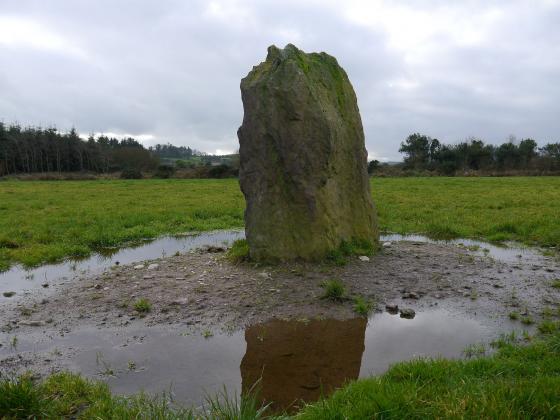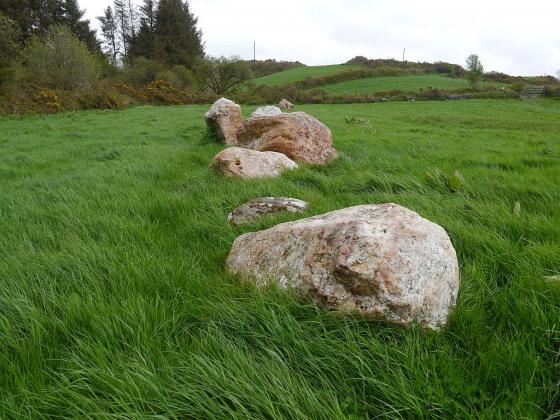
July 2014

July 2014

July 2014

July 2014

July 2014

What remains with the familiar notch in the closest stone.

A good illustration, taken from the hill behind, of the raised location of the circle within its landscape.

The likely line to the horizon if, as seems probable, the axial stone has been displaced.

The intact portal and a possible fallen slab.

External view of the axial stone.

The line to the horizon if the axial is in its original position.

The pile of stones as seen from the road
A daunting puzzle, but the pieces may still be there – six or seven likely stones are mixed with the still-extending field clearance fill. Three stones remain on the perimeter. The two to the northeast; one intact and flat-topped, one a stump, look likely to be portals but the third survivor; the axial-stone, is set on a line to the north of the complete pillar and its companion.
It seems probable, given its disposition, that this stone has been pushed south a full quarter-turn and would have originally featured an upper internal concave area (22cm wide in this case), similar to Lettergorman S. A revised mid-portal-axial line would strike a notch in the high ground across the valley, about five degrees further north.
The circle is set just north of a low knoll. Only brief glimpses of distance are available between hills to the NE and ESE, but a wide vista, with a well-marked horizon, is provided to the SW.
The very obliging owner of this land lives in the farmhouse on the same by-road, immediately to the west.
Not much left of this, unfortunately. Just a pile of stones, looking like field clearance, on the ridge. A couple of uprights on the edges provide the clues.















































































